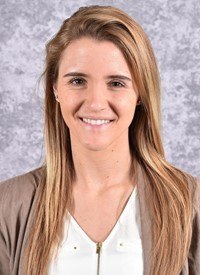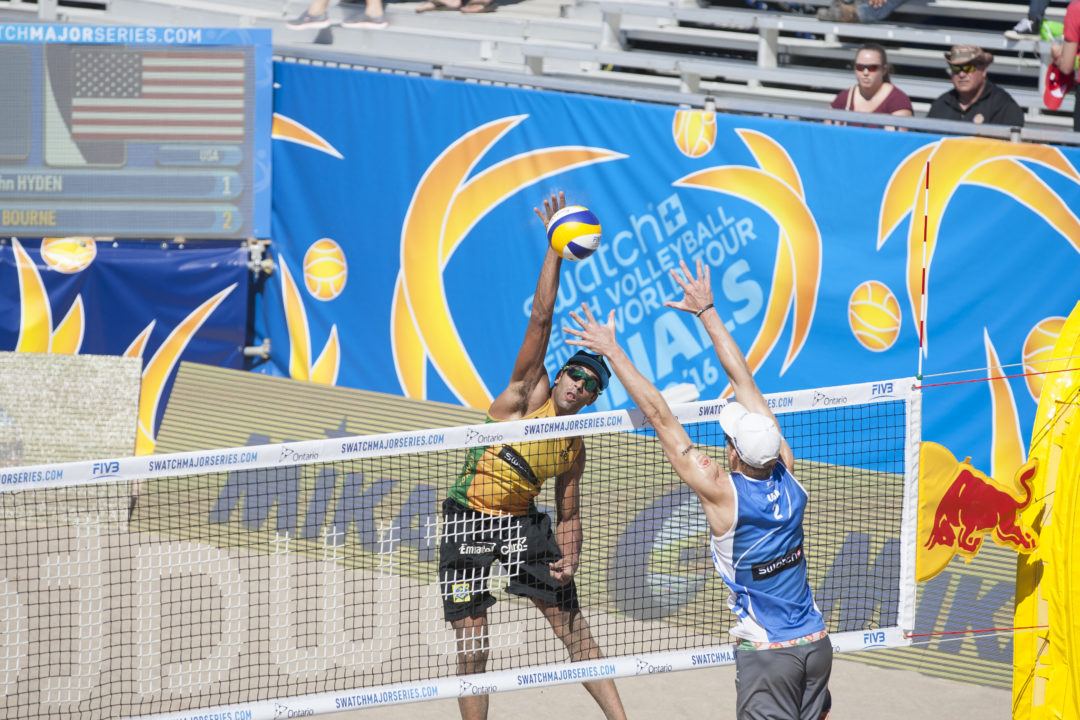While the risk of head trauma in a sport like volleyball, which is not designed to have human-to-human physical contact, is lower than in the lightning rod that is football, it does still happen. The most common cause of concussions in volleyball is from a ball to the face, which cost Wisconsin star Amber McDonald 2 weeks of her 2016 season. Further, as a result of the different level of players (some diving simultaneously with others diving) and the quick reactions necessary, incidental teammate-on-teammate contact can happen – like the knee to the face suffered by Creighton’s Brittany Witt during the NCAA tournament.
When sustaining a concussion it is important to consult with your doctor or a neurologist. Concussions vary in severity and each individual may experience different signs and symptoms. When sustaining a concussion the most important thing is allowing the brain to rest. This includes no phone/television, school, and anything that aggravates/ provokes symptoms.
Signs and symptoms to look for but are not limited to are the following:
- Severe or worsening headache
- Neck pain
- Blurred vision
- Persistent vomiting
- Irritability
- Loss of consciousness
- Dizziness
- Unequal pupils
- Sensitivity to noise
- Sensitivity to light
- More emotional
- Feeling in a “fog”
A return to play protocol can vary depending on the state, division, or population. Patients need to be cleared by a physician to proceed in the return to play protocol. For the NCAA, the return to play protocol after a concussion goes as follows:
- Stage 1: Remove from all activity. Complete and cognitive rest until asymptomatic.
- Stage 2: Light aerobic exercise. Example: waking, stationary bike for 15 minutes at <70% max heart rate. Objective is to increase heart rate.
- Stage 3: Sport specific exercise. Example: jog/sprint. Objective is to add movement.
- Stage 4: Non-contact sports specific. Sport specific drills that involve cognitive and coordination with exercise. Example: setting, passing and footwork, but no blocking, digging, or service receives
- Stage 5: Full contact practice. Purpose is to restore confidence and allow assessment of coaching staff.
- Stage 6: Return to full activity.
*It is important to note that progression to the next stage is no less than 24 hours, if signs and symptoms return patient regresses to the prior stage. Example: athlete gets a headache during stage 3, the next day this patient must start at stage 2 if symptoms have resolved.
Note: each specific case is different, and you should consult with your medical professional if you suspect that you may have a concussion. This advice is not intended as a treatment plan for any athlete.
 Eileen Kellner, BSAT, LAT, ATC is a resident athletic trainer with the Florida Gulf Coast University swimming and men’s tennis teams. She graduated Magna Cum Laude in 2016 with a Bachelor of Science in Athletic Training from FGCU, and has worked with Palmetto Ridge High School, Golden Gate High School, University of the South, and Ave Marina University. While at University of the South, Kellner worked on research focusing on platelet rich plasma therapy and its affects on acute hamstring injuries. She is a member of the National Athletic Trainers Association.
Eileen Kellner, BSAT, LAT, ATC is a resident athletic trainer with the Florida Gulf Coast University swimming and men’s tennis teams. She graduated Magna Cum Laude in 2016 with a Bachelor of Science in Athletic Training from FGCU, and has worked with Palmetto Ridge High School, Golden Gate High School, University of the South, and Ave Marina University. While at University of the South, Kellner worked on research focusing on platelet rich plasma therapy and its affects on acute hamstring injuries. She is a member of the National Athletic Trainers Association.

Leave a Reply